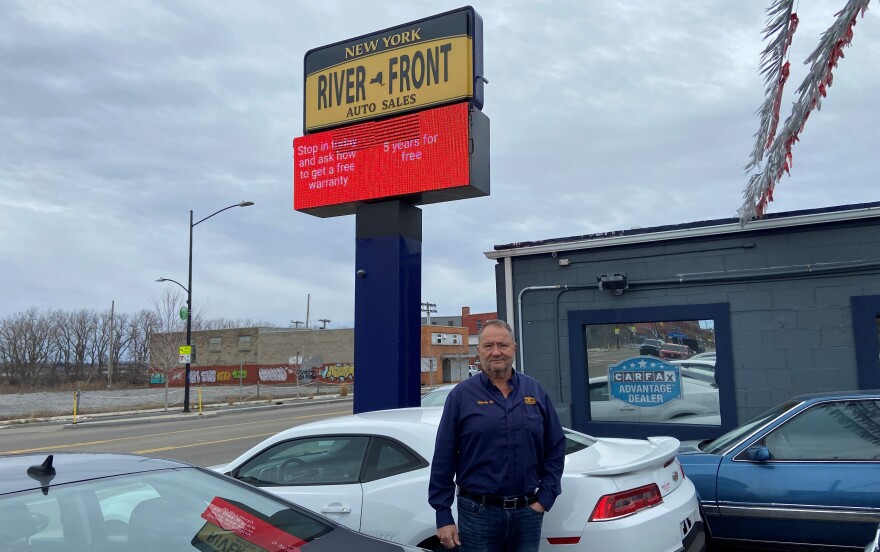Local used car dealers are seeing a surge of sales. They call it “panic buying,” with many hearing economic concerns from customers like interest rates, continued inflation, and fears of tariffs raising new car prices.
To hear Marty Pecoraro Sr. tell it, business has never been busier at Riverfront Auto Sales on Niagara Street.
One year ago, Pecoraro said he was selling approximately 15 vehicles a month. For the past few months, Riverfront is now selling as many as 40 vehicles a month.
Tariffs are one factor but so are interest rates.
Experian reports that rates for new cars — for someone with a high credit rating of 800-plus — is 5.08 percent and 7.41 percent for a used car.
For those with an above average credit rating in the 750-800 range - the rates are 6.7 percent for a new car and 9.63 percent for a used car.
These can fluctuate almost daily, leaving consumers to think on their feet.
CarEdge, an auto industry data tracking agency, reports the average used car sells for $25,128, while the Kelley Blue Book average of a new car is $48,641.
Taken together, all those factors are leading to a very busy period for dealers like Riverfront’s Pecoraro.
"I think people are concerned with the tariffs. I don't think they realize what it's going to cost them to buy either a new car or used car," he said. "So people are, I don't want to say it, but it's pretty close to panic buying."
It is getting harder to find good quality used cars and, yes, prices for those vehicles is on the rise, Pecoraro said. In some cases, prices have risen 10 percent just in the past few weeks.
Why? Pecoraro said it comes down to supply and demand.
"We're off to a banner year, the last two months have probably been two best months in our 45 years of business," he said. "I don't know if that's going to keep up, but it seems like people are coming in because they don't want to buy new and they're afraid of the same thing — what the cost of used cars are going to be three, six, nine months from now."
This current cycle is not something new to Paul Stasiak, Niagara Frontier Auto Dealers Association president.
Like many other industries, there are upward and downward cycles. Right now, used cars sales are in vogue but he said customers are still buying new vehicles too.
Even with the used cars sales spike, it remains about a 50/50 tie between customers buying new or used vehicles, Stasiak said based on data his agency receives from local dealers.
"A purchase of a vehicle is a hot commodity," he said. "In the last three days, new, used, our new car dealers are just as busy with new cars as they are used."
True, there is a sense of what Stasiak calls “panic buying” for used cars, but that may subside in the coming months. For now, used cars are hot, Stasiak said.
"The used car price is a self-regulated price," he said. "It's not a tariff-induced price, because if the dealer wants to sell it — that same $20,000 car for $21,500 — he can do so tomorrow, but the demand on that car is going to drive it to $23,000 because of panic."
Ultimately Stasiak said, car buying customers will make the final choice.



